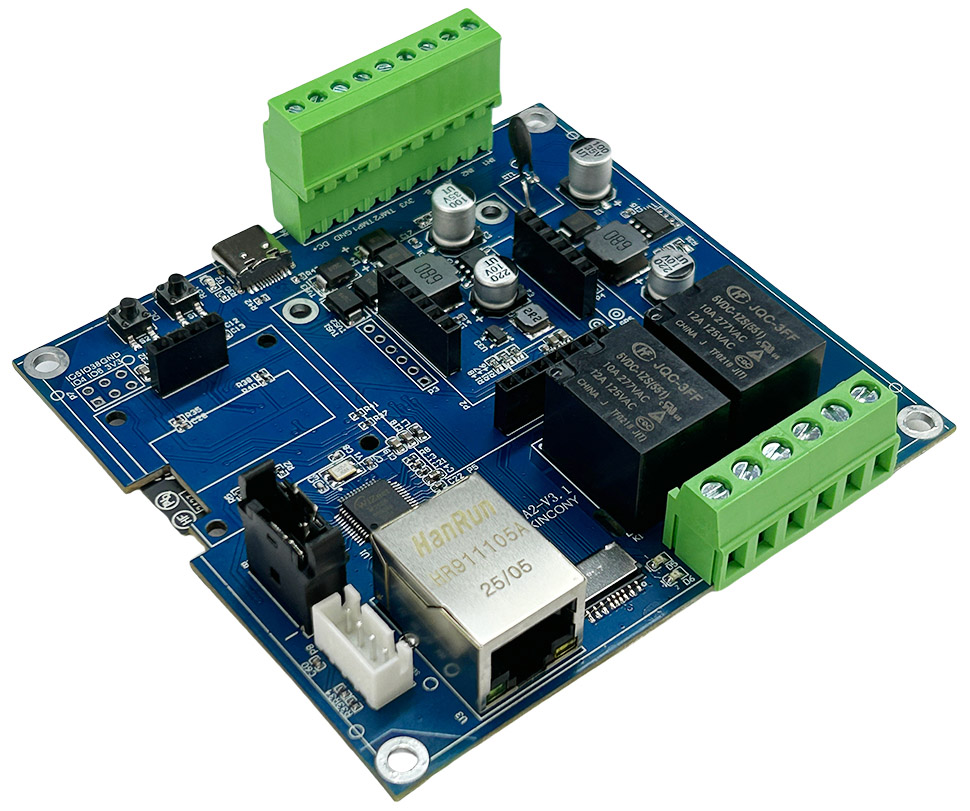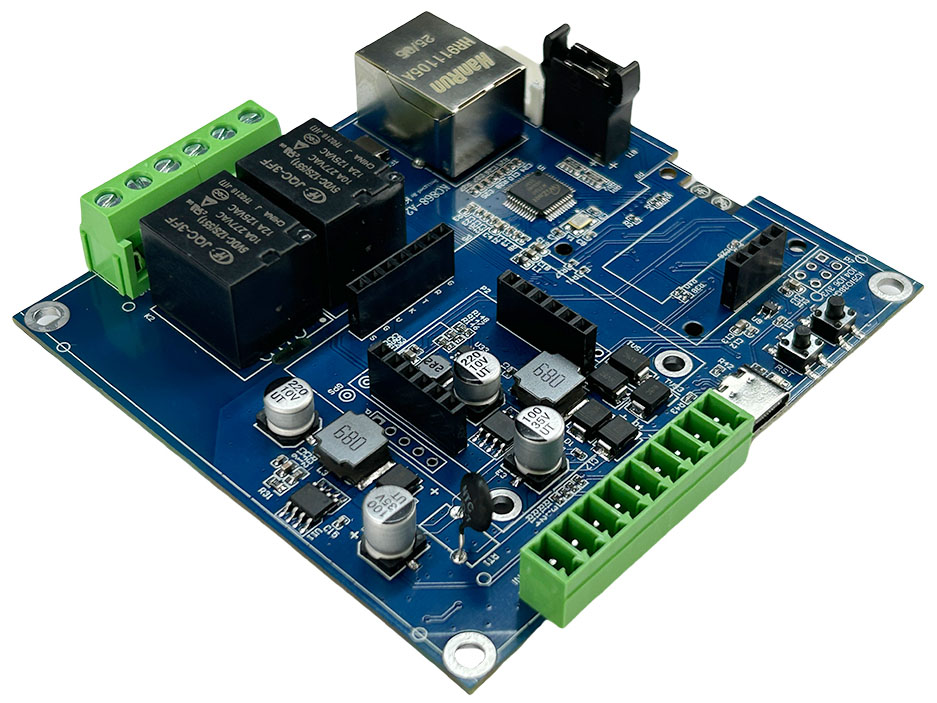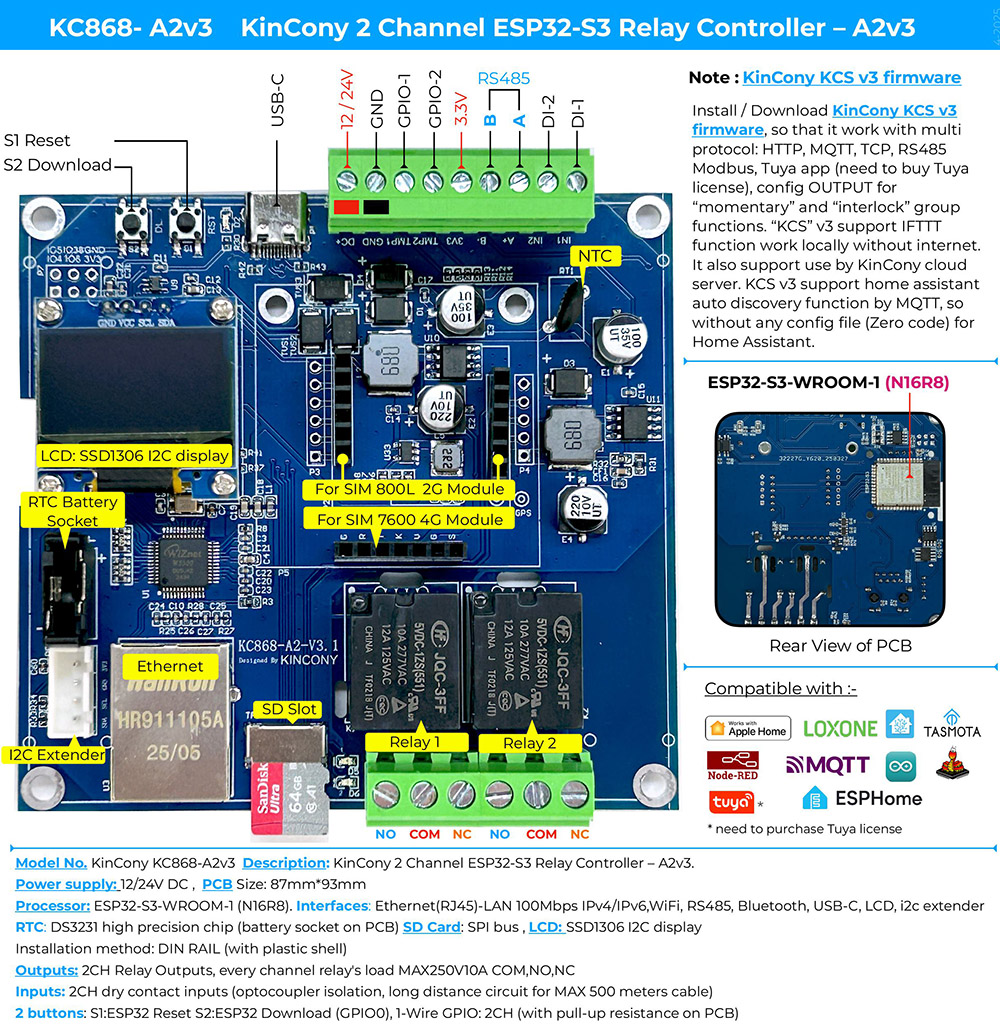KinCony KC868-A2v3 (ESP32-S3 2CH Relay)



Resources
ESPHome Configuration
Here is an example YAML configuration for the KinCony KC868-A2v3 board.
esphome:
name: a2v3
friendly name: a2v3
esp32:
variant: esp32s3
framework:
type: arduino
# Enable logging
logger:
# Enable Home Assistant API
api:
ethernet:
type: W5500
clk_pin: GPIO42
mosi_pin: GPIO43
miso_pin: GPIO44
cs_pin: GPIO41
interrupt_pin: GPIO2
reset_pin: GPIO1
i2c:
- id: bus_a
sda: 48
scl: 47
scan: true
frequency: 400kHz
uart:
- id: uart_1
baud_rate: 9600
debug:
direction: BOTH
dummy_receiver: true
after:
timeout: 10ms
tx_pin: 7
rx_pin: 15
- id: uart_sim7600
baud_rate: 115200
debug:
direction: BOTH
dummy_receiver: true
after:
timeout: 10ms
sequence:
- lambda: UARTDebug::log_string(direction, bytes);
tx_pin: 10
rx_pin: 9
switch:
- platform: gpio
pin: 40
name: "A2v3-Relay1"
- platform: gpio
pin: 39
name: "A2v3-Relay2"
- platform: uart
uart_id: uart_1
name: "RS485 Button"
data: [0x11, 0x22, 0x33, 0x44, 0x55]
- platform: uart
uart_id: uart_sim7600
name: "UART 4G"
data: "AT+CGSN\r\n" # read 4G SIM7600 ID
binary_sensor:
- platform: gpio
name: "A2v3-input1"
pin:
number: 16
inverted: true
- platform: gpio
name: "A2v3-input2"
pin:
number: 17
inverted: true
- platform: gpio
name: "IO18"
pin:
number: 18
inverted: true
- platform: gpio
name: "IO8"
pin:
number: 8
inverted: true
- platform: gpio
name: "IO4"
pin:
number: 4
mode:
input: true
pullup: true
inverted: true
- platform: gpio
name: "IO5"
pin:
number: 5
mode:
input: true
pullup: true
inverted: true
- platform: gpio
name: "IO6"
pin:
number: 6
mode:
input: true
pullup: true
inverted: true
- platform: gpio
name: "IO38"
pin:
number: 38
mode:
input: true
pullup: true
inverted: true
web_server:
port: 80
font:
- file: "gfonts://Roboto"
id: roboto
size: 20
display:
- platform: ssd1306_i2c
i2c_id: bus_a
model: "SSD1306 128x64"
address: 0x3C
lambda: |-
it.printf(0, 0, id(roboto), "A2v3");